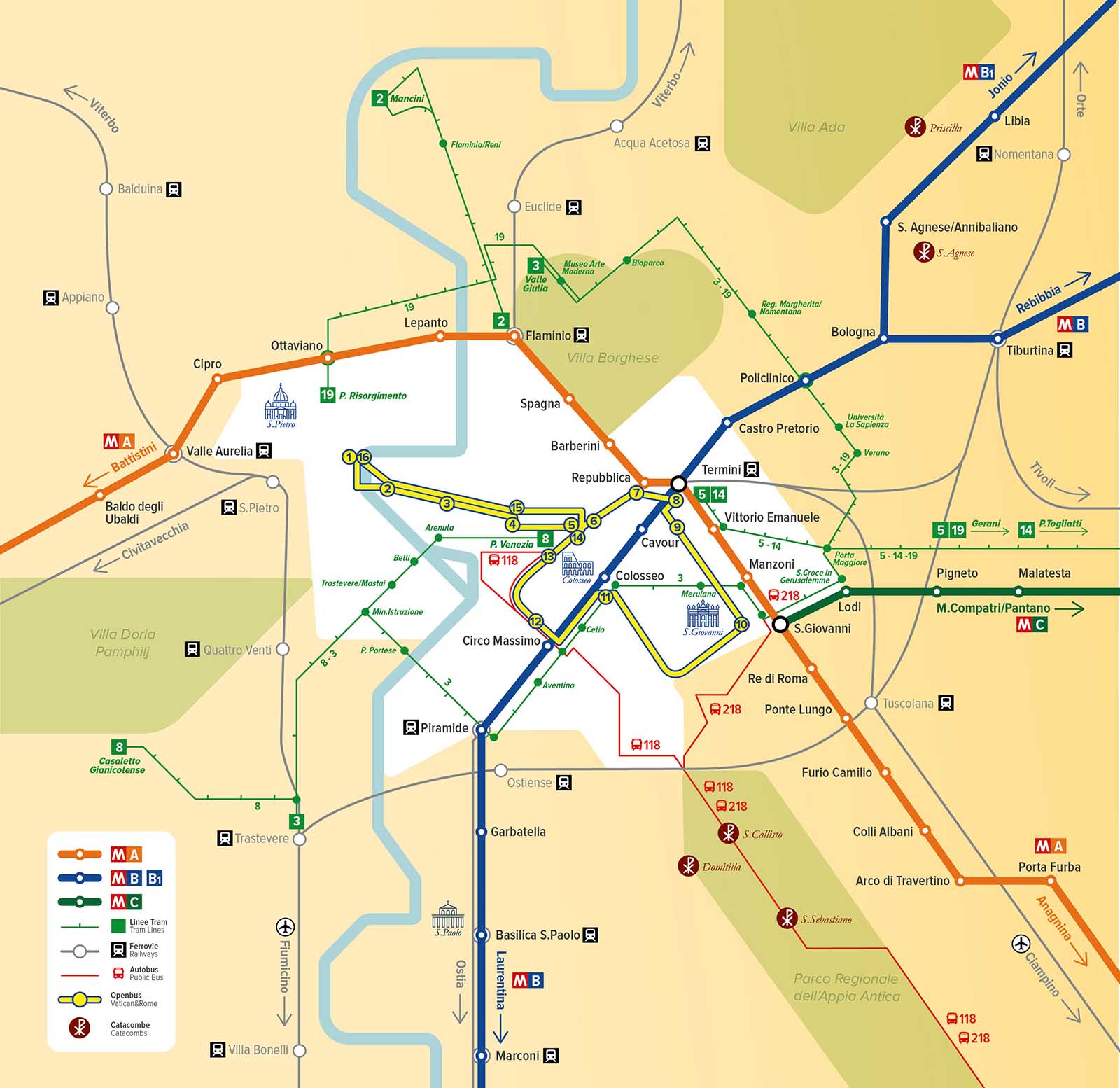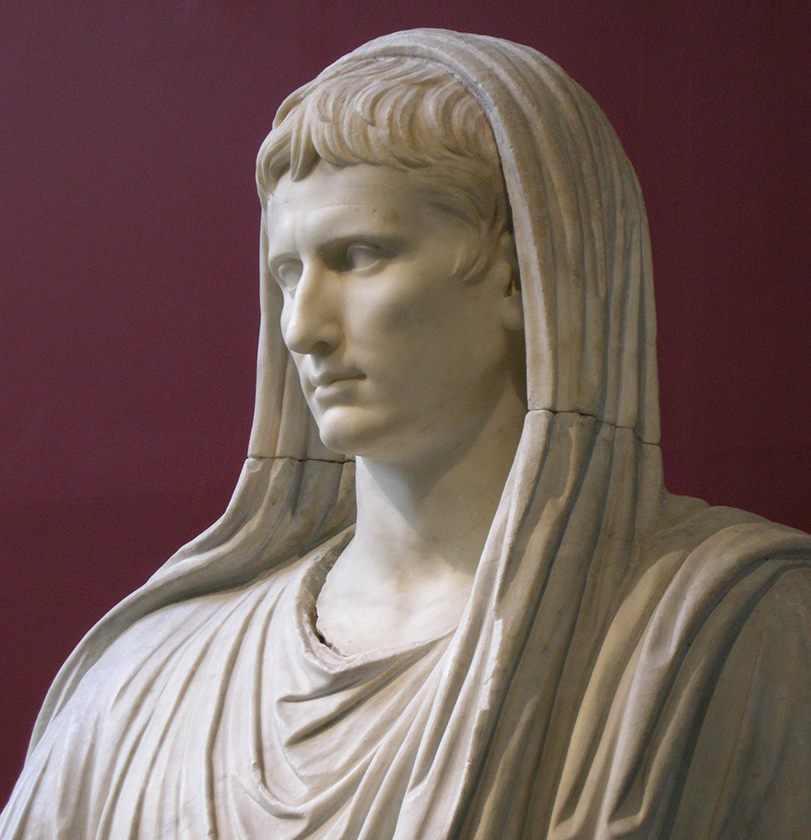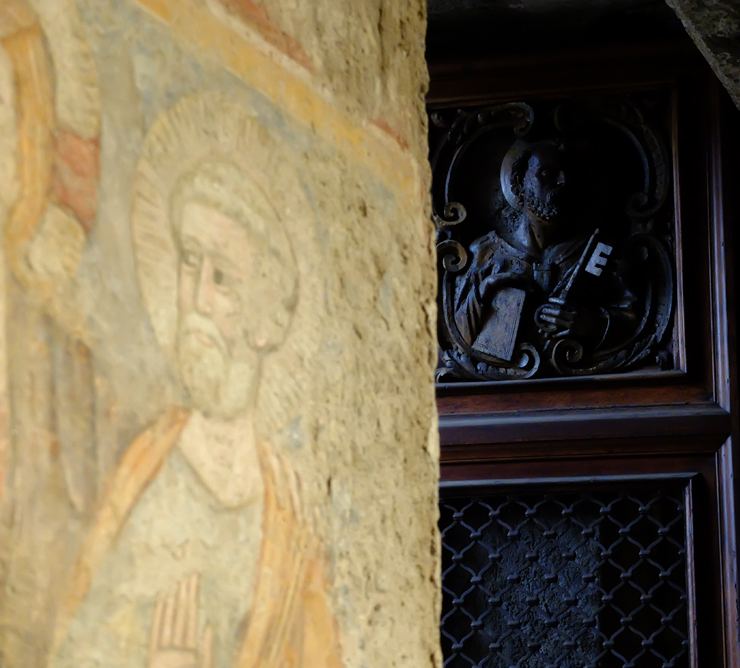By purchasing your 72 hours Omnia Card, you will find included the Roma Pass, a special travel card issued by Roma Capitale, and valid for 72 hours that allows free access to the public transport network and free entrance to 2 Museums or Archaeological Sites plus a reduced admission of your choice among 40 others sites of interest.
Rome offers a wide variety of museums and archaeological sites that absolutely deserve to be visited. This card allows the access to archaeological sites such as the Colosseum, the Roman Forum and the Palatine Hill, the Excavations of Ancient Ostia and the Baths of Caracalla.
Also of great interest are the many museums about the history of Rome such as the Capitoline Museums, the National Roman Museum, the Museum of Roman Civilisation (temporarily closed) or the Etruscan Museum of Villa Giulia.
If, instead, you wish to get closer to the world of ancient and modern art, we recommend you the National Gallery of Palazzo Barberini or the National Modern Art Galler while, for what concern Contemporary Art, we suggest you to visit the Macro or the Maxxi Museums.
For Saturdays, Sundays and holidays, reservations are required by the day before for some museums and archaeological sites.
However, reservations are required in many museums even on weekdays.
It is recommended to check the modality of access / booking / opening hours of each single museum.
The Colosseum, Roman Forum and Palatine Hill, the Borghese Gallery, the Mausoleum of Augustus and the archaeological excavations of Palazzo Valentini / Domus Romane provide, even for holders of the Roma Pass 72 Hours or Roma Pass 48 Hours, reservations are required, even on weekdays.
It is advisable to book at least 10 days in advance. It is possible to book even if you are not yet in possession of your Roma Pass card, always providing the name of the owner of the Roma Pass.
For the Roma Capitale Museums System, reservations are strongly recommended online at * romapass.vivaticket.it or via the contact center on 060608 (every day from 9 to 19). Reservation is free.
For any further information on how to book, please visit the RomaPass page in the FAQ n.07
SUBWAY
Free access to the Rome Metro, Lines A, B, B1 and C
BUS & TRAM
Free access on buses and trams operated by ATAC
REGIONAL RAILWAYS within the Municipality of Rome
EXCLUSIONS

Rome Metro Network

The National Roman Museum houses collections themed on the history and culture of the city in ancient times.
The museum was established in 1889 (and opened the following year) to collect the antiquities of the city dated between the fifth century BC, and the third century AD. The Roman archaeological collections of the Kircher Museum and the numerous finds that were discovered in the city were added to it after the urban transformations of Rome determined by its new role as capital of the Kingdom of Italy, were initially intended to be exhibited in a "Tiberine Museum", which was, however, never created. In 1901 the Villa Ludovisi was bought by the State and the important collection of ancient sculptures was transferred to the museum.
hide
Visit with audio guide of the famous prison of Ancient Rome, the place where the Apostles Peter and Paul lived their last days.